
data-animation-override>
“Jaguar takes on the Germans at their own game with the all-new XE: Allan checks out the Sport version to see if it really is capable of putting a cat among the pigeons”
Jaguar practically invented the compact executive car in the Swinging Sixties: its iconic Mk2 set the benchmark that all other automakers would follow. Of course, those heady days were well behind it when, in 2001, the company attempted to re-enter the market it had pioneered with that Mk2.
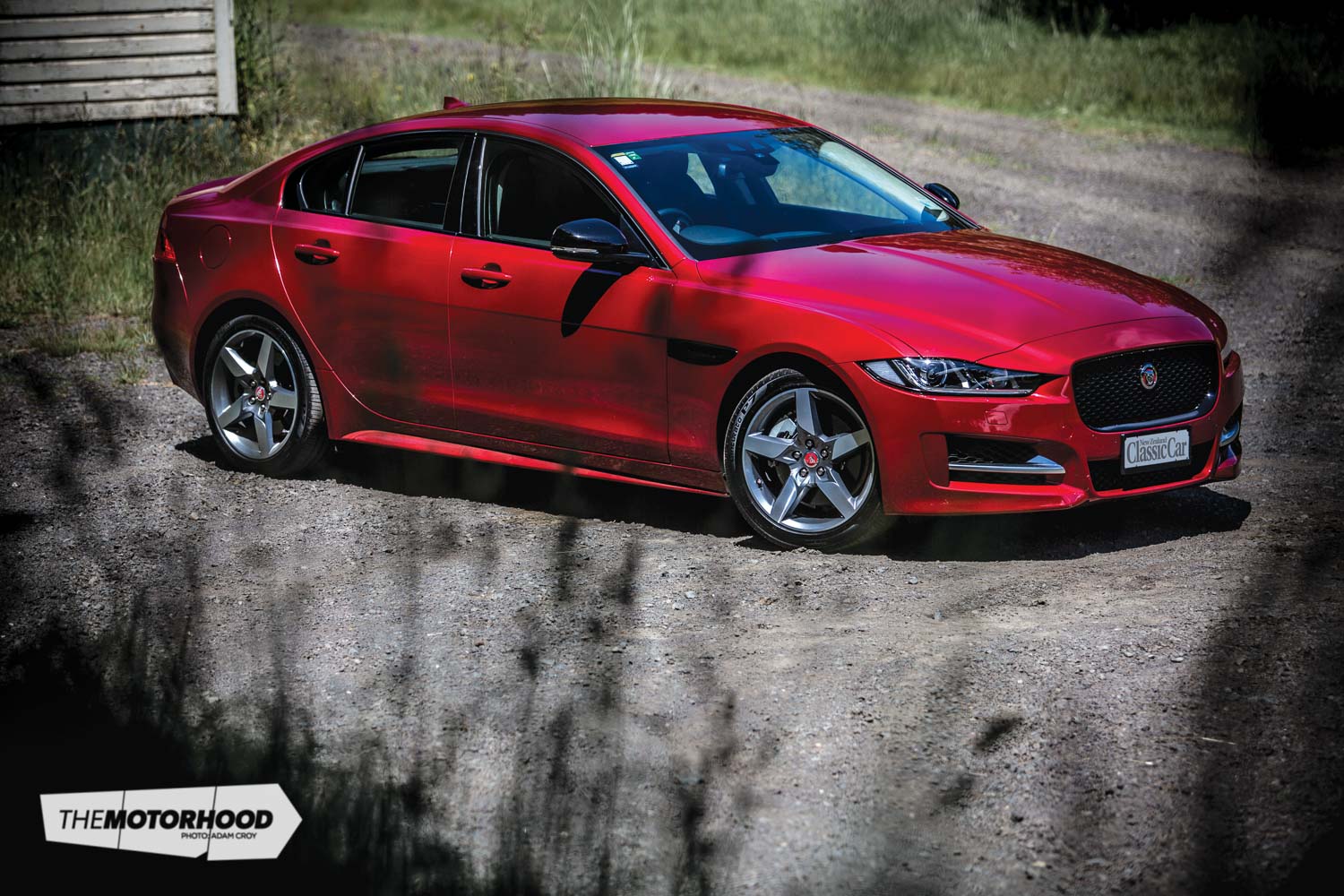
Then operating under the aegis of Ford, Jaguar’s X-Type was based on a platform shared with the Mondeo. Although the new compact Jaguar — initially only available with all-wheel drive and powered by either a 2.5-litre or a 3.0-litre V6 — looked stylish, the purists were unimpressed by the X-Type’s humble Ford antecedents. And while most praised the car’s on-road abilities, for some, there remained the sneaking suspicion that Jaguar was ripping off punters with an overpriced Mondeo pimped up in a flash suit.
As such, X-Type sales never climbed to the heights initially projected. The company had planned to sell 100,000 annually, but, at best, only half that figure was ever achieved, with sales quickly sinking to even lower levels despite the addition of diesel-powered variants and, a first for Jaguar, a stylish Ian Callum–penned estate version.
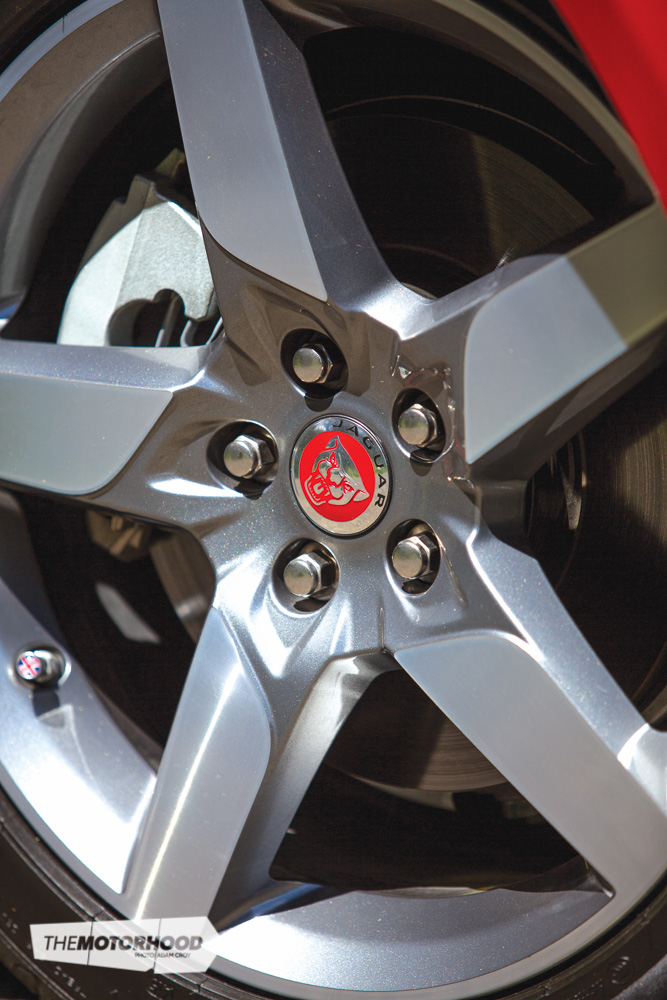
Indian company Tata Motors inherited the X-Type in 2008 when it took over Jaguar from Ford, but the car’s days were numbered, with the final examples produced in 2009.
Then, in January 2011, Jaguar intimated that it was working on a replacement for the X-Type — an all-new saloon intended to take on the major German manufacturers currently on the leading edge of the compact executive class.
So, is the new Jaguar up to the challenge of tackling BMW, Mercedes-Benz, and Audi head on? Before we buckle up and take to the road in the all-new Jaguar XE to find out for ourselves, let’s look at some of the technical details.

Skinning the cat
The XE range is available in three levels — Pure, Prestige, and Sport — and features three different engines: a 2.0-litre turbocharged four-cylinder petrol unit and a 2.0-litre turbo diesel, with the top-of-the-line S utilizing the same supercharged 3.0-litre V6 as the entry-level F-Type. While Jaguar’s German competitors merely dabble with the odd aluminium panel, the fact that the Jaguar XE has a completely aluminium platform and the majority (75 per cent) of its body panels pressed in aluminium makes for a genuine point of difference from its rivals.
When initially released, the Jaguar XF was intended to feature an all-aluminium chassis, but Ford hit that idea on the head — as you might expect, a lengthened version of the XE’s platform will also underpin the next-generation XF. The XE’s suspension — fully independent via wishbones up front and lateral links at the rear — also features aluminium construction.

The end result is a stylish-looking saloon that, while following most currently popular design trends, still manages to indisputably look like a Jaguar — a neat trick.
Equally impressive is the XE’s beautifully trimmed cabin that successfully blends thoroughly modern looks and equipment with an understated touch of traditionalism. The most noticeable interior feature is something that Jaguar calls the ‘Riva Hoop’ — a design element that effectively links the XE’s dashboard with the rest of the car’s interior trim. It works surprisingly well and gives the car bags more showroom appeal than the plainer, more conventional offerings from Jaguar’s Teutonic rivals. New Zealand Classic Car’s former deputy editor Tim Nevinson — who was invariably bamboozled by poorly executed automotive gadgetry — would be delighted to discover that the XE’s main information and satnav system is a breeze to use, which is a massive improvement over past Jaguars.
Of course, technical niceties aside, it’s how the XE drives that really matters.

On the road
We were initially scheduled to road-test the supercharged V6 XE S but, alas, as Jaguar New Zealand did not yet hold sufficient XE stock, our test car was sold from under our noses, and, instead, we were presented with a gorgeous XE R-Sport — oddly enough, finished in Italian Racing Red!

While the four-cylinder R-Sport gives away over 100kW to the 3.0 S, its turbocharged 1999cc engine is certainly no slug and, coupled with the seamless shifting available from the XE’s eight-speed automatic gearbox, offers sparkling performance and excellent economy. Mind you, those seeking ultimate economy should probably opt for the turbo-diesel XE, which, realistically speaking, isn’t significantly slower than the petrol-powered models.
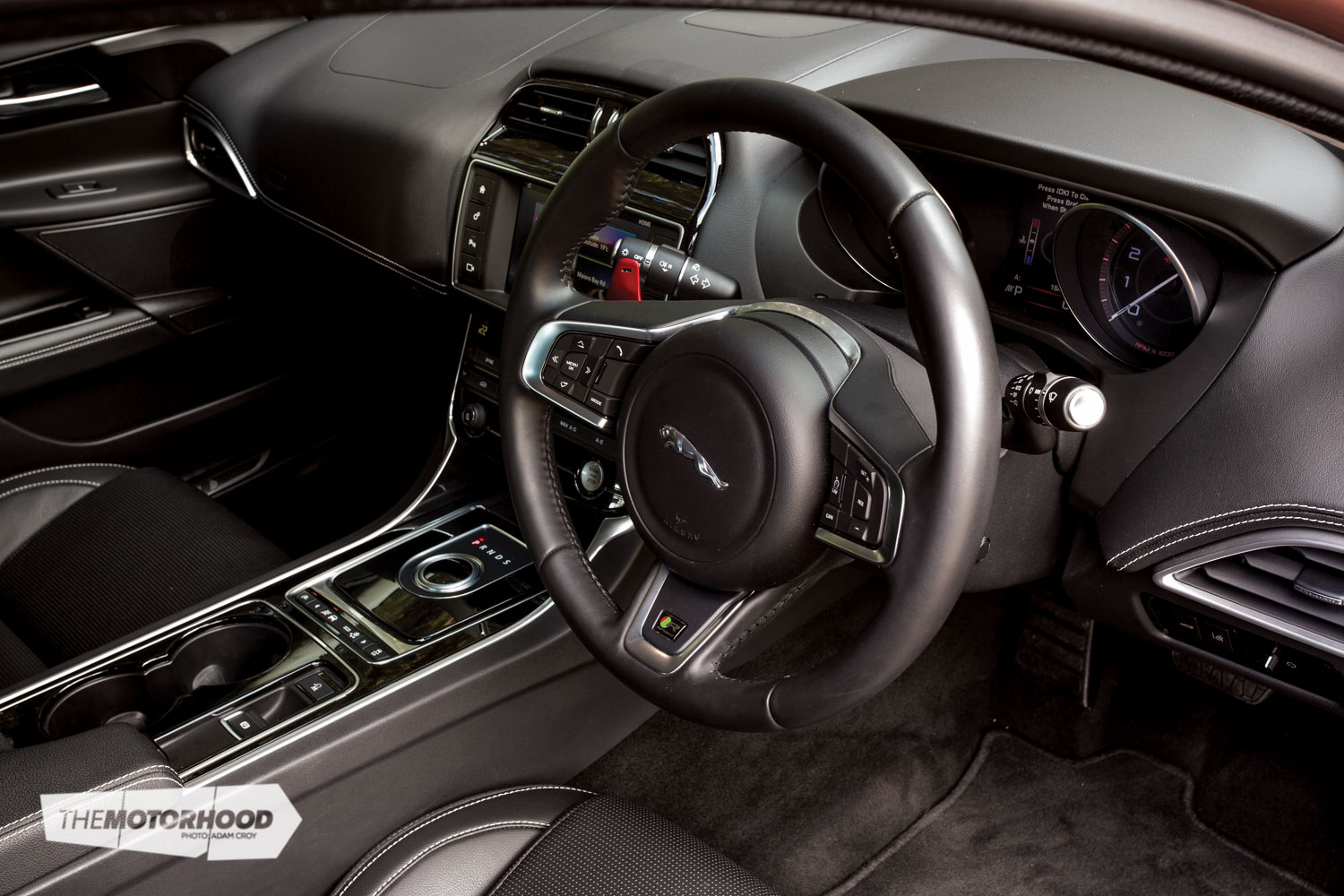
With its beautifully weighted, electrically power-assisted steering (a first for Jaguar) and the car’s innovative All Surface Progress Control taking care of slippery road surfaces, it’s easy to take full advantage of the XE’s performance. With bags of grip from the well-sorted chassis, the Jaguar slices through corners like a true thoroughbred and, as you’d expect, the suspension handles bumpy roads with aplomb. Switch into sport mode and you pay a small ride penalty — most obvious when covering rippled road surfaces at high speed — but, by and large, the XE displays a remarkable sense of agility that is allied to crisp and precise handling.
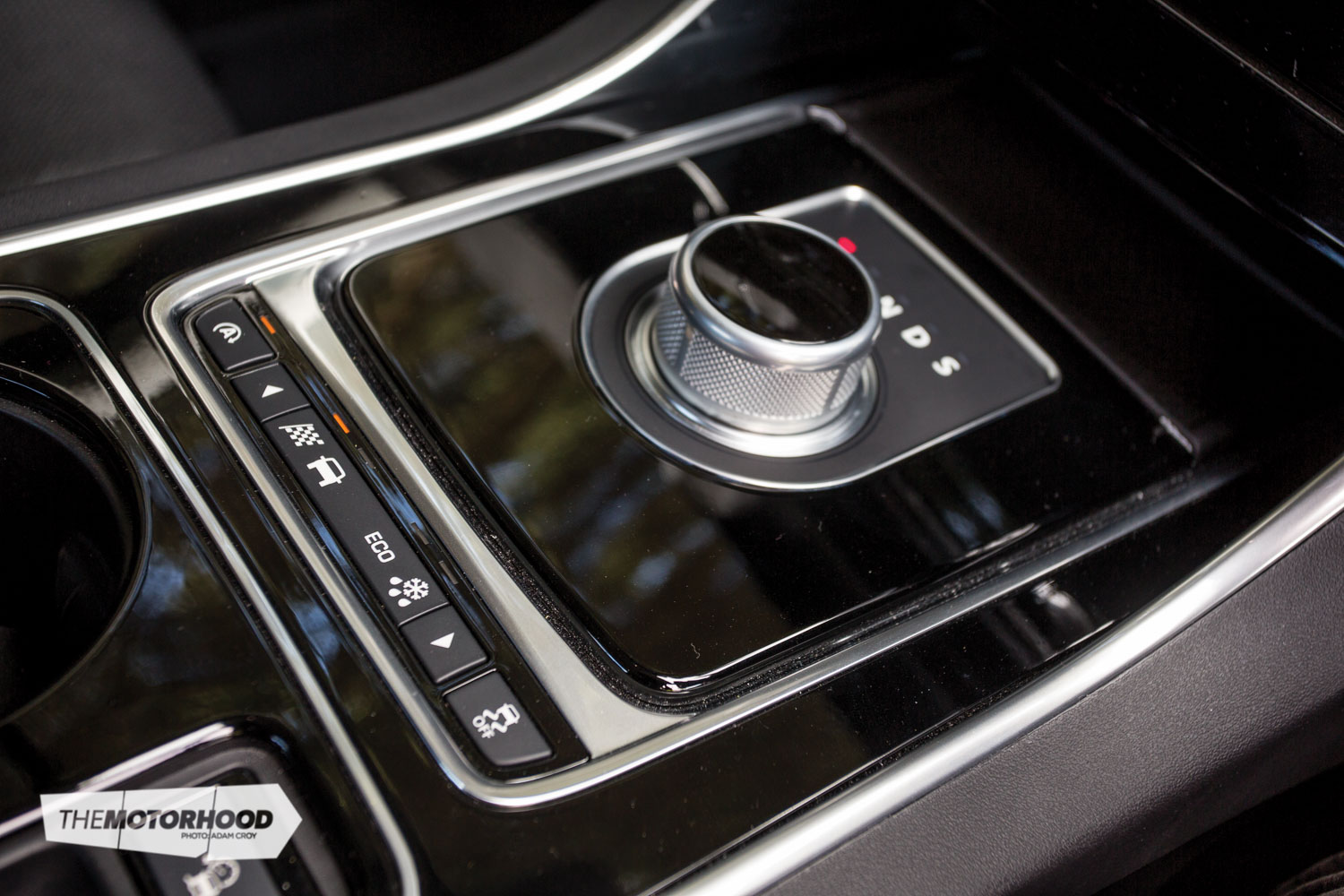
Jaguar practically invented the compact executive car in the Swinging Sixties: its iconic Mk2 set the benchmark that all other automakers would follow. Of course, those heady days were well behind it when, in 2001, the company attempted to re-enter the market it had pioneered with that Mk2. Then operating under the aegis of Ford, Jaguar’s X-Type was based on a platform shared with the Mondeo. Although the new compact Jaguar — initially only available with all-wheel drive and powered by either a 2.5-litre or a 3.0-litre V6 — looked stylish, the purists were unimpressed by the X-Type’s humble Ford antecedents. And while most praised the car’s on-road abilities, for some, there remained the sneaking suspicion that Jaguar was ripping off punters with an overpriced Mondeo pimped up in a flash suit.
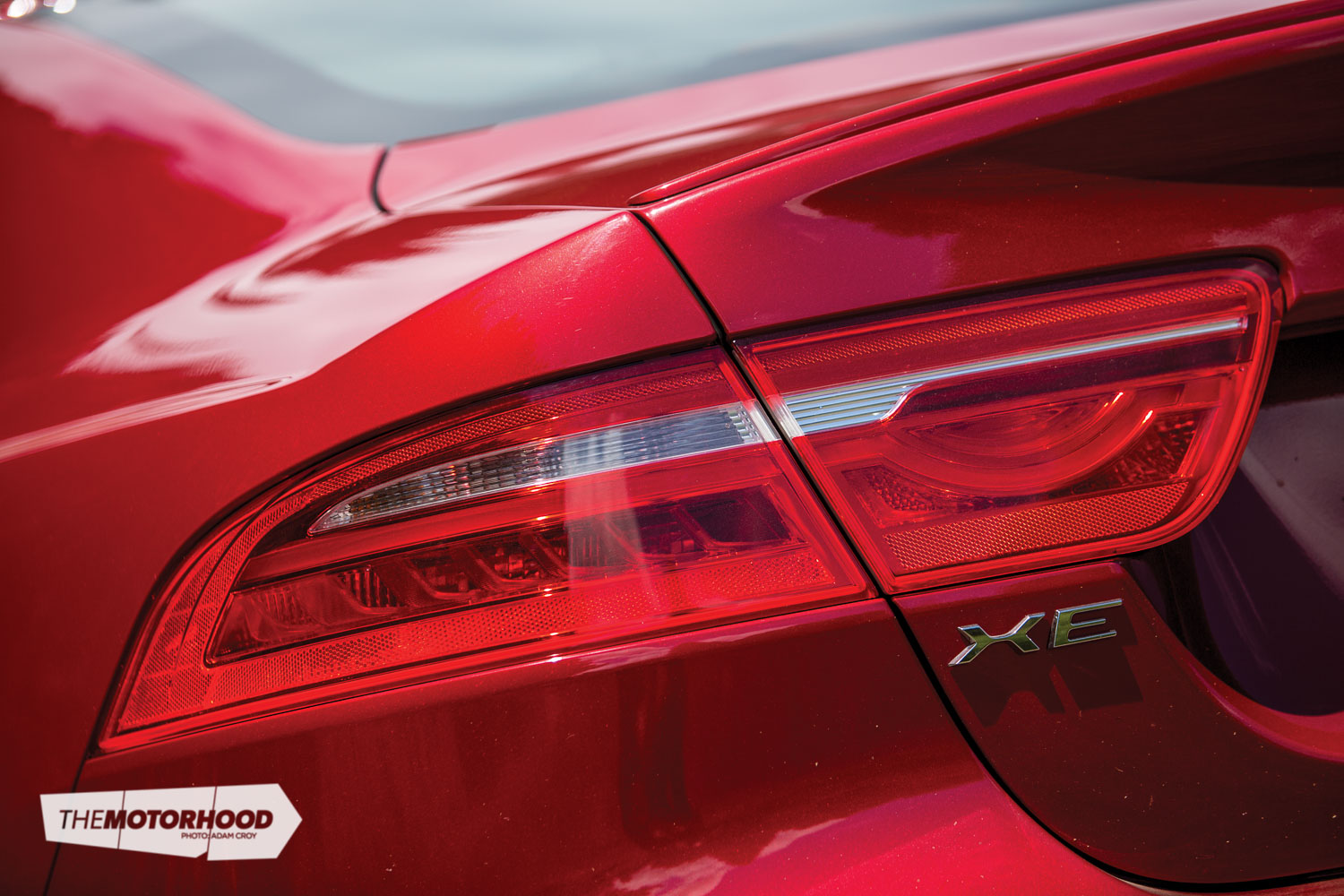
As such, X-Type sales never climbed to the heights initially projected. The company had planned to sell 100,000 annually, but, at best, only half that figure was ever achieved, with sales quickly sinking to even lower levels despite the addition of diesel-powered variants and, a first for Jaguar, a stylish Ian Callum–penned estate version.
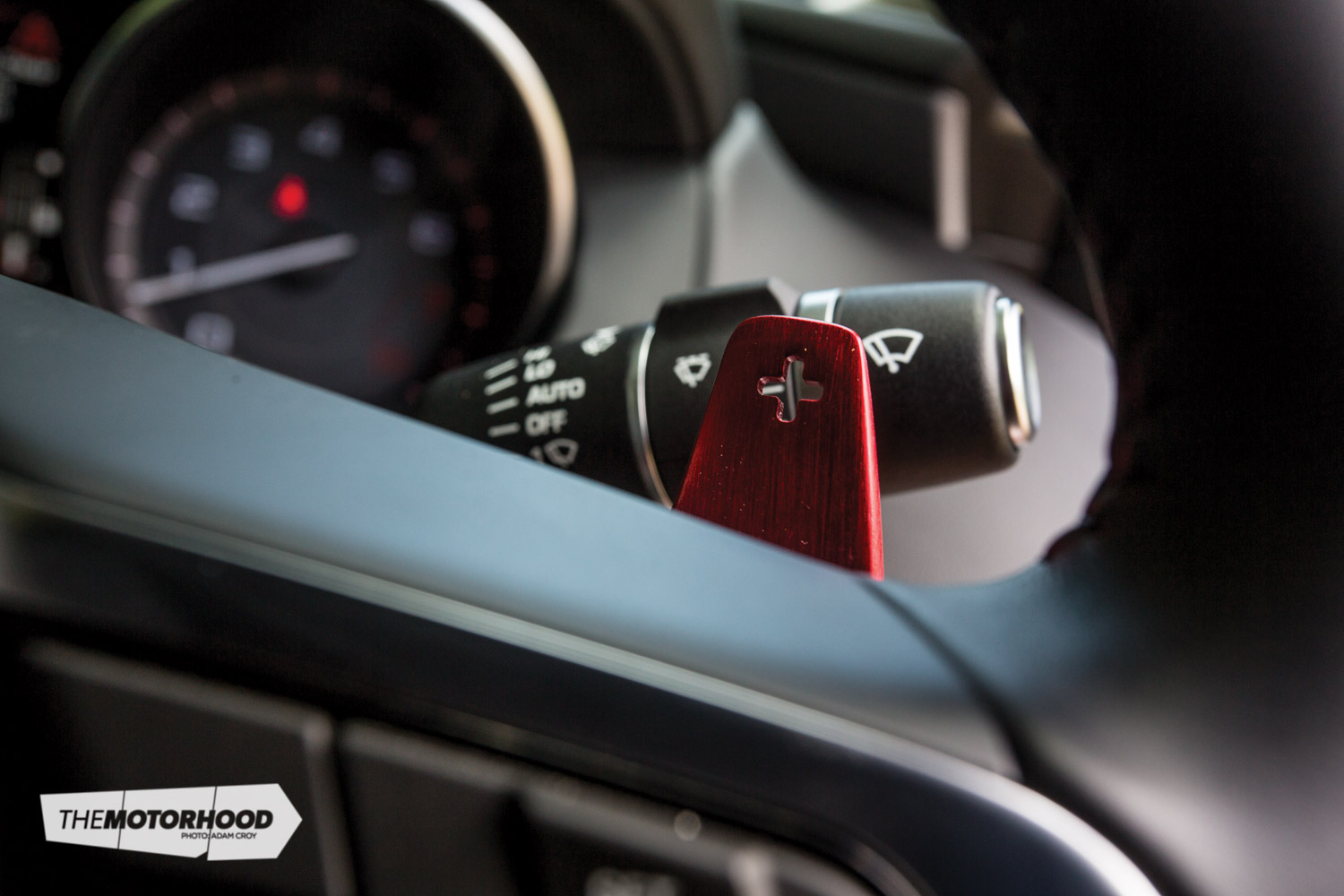
Indian company Tata Motors inherited the X-Type in 2008 when it took over Jaguar from Ford, but the car’s days were numbered, with the final examples produced in 2009. Then, in January 2011, Jaguar intimated that it was working on a replacement for the X-Type — an all-new saloon intended to take on the major German manufacturers currently on the leading edge of the compact executive class.
So, is the new Jaguar up to the challenge of tackling BMW, Mercedes-Benz, and Audi head on? Before we buckle up and take to the road in the all-new Jaguar XE to find out for ourselves, let’s look at some of the technical details.

The verdict
Jaguar has come a long way over the past few years, the marque having been seriously revitalized by genuinely desirable models such as the F-Type — and there’s more in store for Jaguar enthusiasts, including a flame-throwing, tyre-frying V8 version of the XE.
In the meantime, with the XE, has Jaguar produced a modern equivalent to the iconic Mk2, but, even more importantly, is it really capable of taking on the might of BMW, Mercedes-Benz and Audi? And, bearing in mind that worldwide Jaguar sales are far fewer than those of its German competitors, can it really steal sales from Germany’s big three to take the company to a level of profitability unknown since the halcyon days of Sir William Lyons rule?
Only time will tell — but we reckon that Jaguar has finally got a genuine, world-beating car on its hands. Rule Britannia? Absolutely!
- Engine: Turbocharged all-alloy four-cylinder
- Capacity: 1999cc
- Bore/stroke: 84.5x89mm
- Valves: DOHC 16-valve
- Max power: 147kW at 5500rpm
- Max torque: 280Nm at 1750–4500rpm
- Fuel system: Direct fuel injection
- Transmission: ZF Eight-speed auto
- Suspension: Independent by unequal-length control arms, coil springs, two-position cockpit-adjustable electronically controlled dampers, anti-roll bar / Independent by control arms, lateral links, and toe-control links, coil springs, two-position cockpit-adjustable electronically controlled dampers, anti-roll bar
- Steering: Rack-and-pinion, variable electric power assistance
- Brakes: Four-wheel vented-disc, anti-lock and stability control
- Wheels/tyres: Alloy / Pirelli P7
Dimensions:
- Overall length: 4686mm
- Width: 2075mm
- Height: 1416mm
- Wheelbase: 2835mm
- Track F/R: 1596mm/1597mm
- Kerb weight: 1530kg
Performance:
- Max speed: 237kph
- 0–100kph: 7.7 seconds
- Economy: 7.5l/100km (combined)
- New Zealand–New Price: From $79,900
This article was originally featured in New Zealand Classic Car Issue No. 302. You can pick up a print copy or a digital copy of the magazine below:















